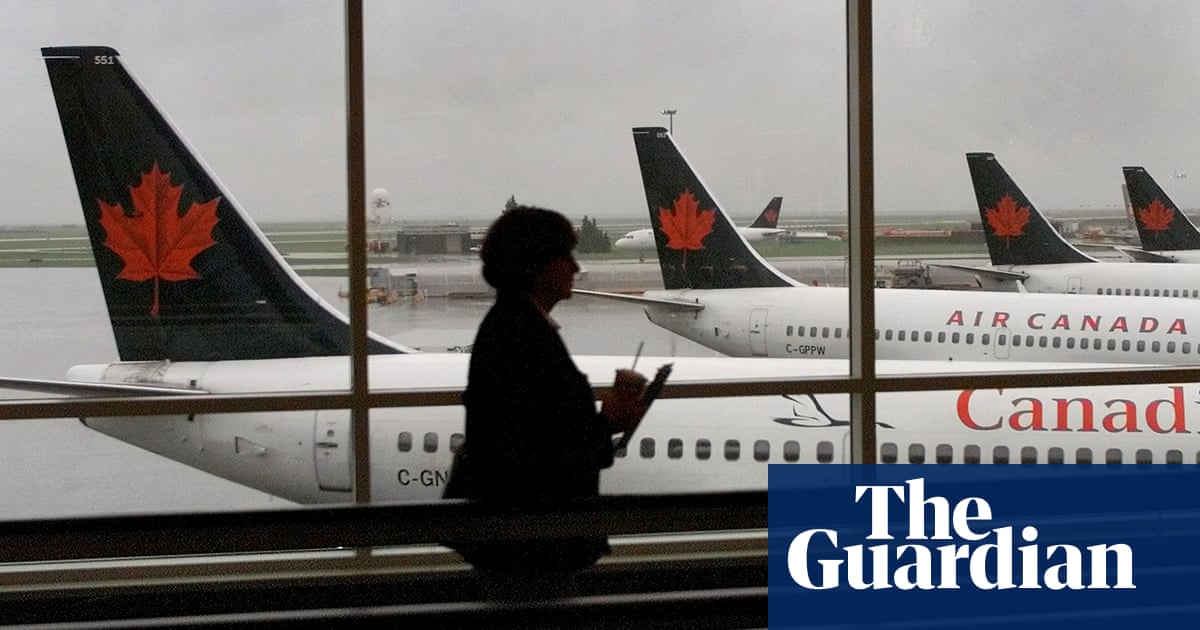Business
Bank of Canada seeks more evidence rates are now high enough
|
|
The Bank of Canada’s No. 2 official said policymakers need time to assess whether they’ve raised borrowing costs enough to curb inflation, reiterating that their path on rates can differ from peers.
In the first speech after keeping interest rates unchanged for the first time in nine meetings, Senior Deputy Governor Carolyn Rogers said Thursday that while officials have seen a “mixed picture” of economic data since January, “things are unfolding broadly in line” with the central bank’s forecast.
“We’ll need to see more evidence to fully assess whether monetary policy is restrictive enough to return inflation to 2 per cent,” she said in a speech to the Manitoba Chambers of Commerce in Winnipeg.
The comments suggest policymakers are comfortable keeping borrowing costs at current levels, but that the conditional hold isn’t set in stone. Rogers acknowledged there are conflicting signals from the economy as well as global pressures.
Speaking to reporters after the speech, she said Canada’s economy is still in excess demand and the labor market is “surprisingly tight.” But higher borrowing costs are weighing on rate sensitive sectors such as housing, and are starting to rebalance the economy, she said.
On Wednesday, Governor Tiff Macklem made good on a January pledge to hold the benchmark overnight rate at 4.5 per cent, the first pause among Group of Seven central banks in this tightening cycle. Policymakers have said they’re prepared to hike again if there’s an “accumulation of evidence” that the economy and inflation aren’t cooling down as forecast.
‘All About the Data Now’
After the decision, traders in overnight swaps markets increased bets that the Bank of Canada could be forced to move as early as its April meeting, as the U.S. Federal Reserve pushes rates higher.
“The risks remain very much skewed to further hikes,” Benjamin Reitzes, a rates and macro strategist at Bank of Montreal, said by email. “If the data are firm over the next six weeks, it sounds like April would be on the table. It’s all about the data now.”
Near-term outlooks for growth and inflation in the U.S. and Europe are now “somewhat higher than we expected in January,” Rogers said. “Since these are our main trading partners, this could point to some further inflationary pressure in Canada.”
Rogers acknowledged the widening divergence in policy between Canada and the U.S. during a question-and-answer session after the speech, saying that the resulting depreciation in the loonie could add to inflationary pressures.
“If that happens, that’ll have to get built into our forecasts,” Rogers said. The Canadian dollar hit its lowest level since October on Thursday.





Business
P.E.I. gas price pumps up for 2nd week in a row
|
|


Increases in the price of gas on P.E.I. have been accelerating over the last few weeks.
The minimum price at the pump for gasoline rose 5.7 cents on Friday to $1.83 per litre.
It was the regular weekly price review from the Island Regulatory and Appeals Commission.
The P.E.I. gas price was also up about a nickel last week, but that did pale in comparison to what happened in Ontario, where media were reporting increases of 14 to 17 cents overnight.
Ontario prices fell in the following days. There were no unscheduled changes on P.E.I., and recent increases in both provinces are now about the same.
The price of gas on P.E.I. had been rising relatively slowly through the first three months of the year, up 13.8 cents from Jan. 1 to April 1. But it is up almost exactly the same amount in the last three weeks.
The maximum price of heating oil was down Friday, dropping 4.2 cents to $1.30 per litre.
The price of diesel was unchanged at $1.86.





Business
Aamjiwnaang First Nation declares state of emergency over benzene levels
|
|
On Thursday, Aamjiwnaang First Nation Chief Chris Plain declared a state of emergency, “…due to the ongoing and excessive discharge of the chemical compound benzene from INEOS Styrolution’s facility.”
Aamjiwnaang defined emergency as, “…a situation that by its nature affects the health, safety, welfare, and property of a community and requires a prompt, controlled, and coordinated response by one or more agencies.”
As previously reported by CTV News, a halt in production at INEOS Styrolution on Tashmoo Avenue in south Sarnia didn’t happen until several people fell ill and an order from the province was issued.
The provincial order given last Thursday gave the company one week to create a plan to address benzene levels.
Community member and environmental activist Ada Lockridge said benzene levels from INEOS were found to be 22 times higher than Ontario’s ambient air quality criteria.
On Monday, INEOS Styrolution provided a brief statement to CTV News, saying the health and safety of employees and the community is paramount, and that it’s shutting down temporarily to address a “mechanical issue.”
Aamjiwnaang First Nation said declaring this state of emergency will assist them in their preparedness and ensures adequate resources in the event further action is required.
The council said if you or your family is feeling unsafe, contact Ashley Jackson at 519-328-6653 for help finding other accommodations.
Aamjiwnaang First Nation said more information will be released as it becomes available.







Business
Air Canada apologizes after headdress of First Nations chief removed to hold
|
|


Canada’s largest airline has apologized to a prominent First Nations chief after her ceremonial headdress was removed from the plane’s cabin, wrapped in a plastic bag and moved to the baggage hold.
Cindy Woodhouse Nepinak, national chief of the assembly of First Nations, was flying domestically on Wednesday when she said her headdress was taken by airline staff.
“Air Canada needs a protocol for First Peoples so that we are not harassed for our sacred items,” she wrote on Facebook, posting images of staff removing the headdress from the cabin of the plane. “Our headdresses don’t belong in garbage bags by airlines,” she added. “Thank you to the kind Canadians on the plane who stuck up for me and tried to help.”
Air Canada said in a statement it had reached out to Woodhouse Nepinak to “better understand and apologize” for the incident, adding that the company “understands the importance of accommodating customers with items and symbols of sacred cultural significance”.
Woodhouse Nepinak, who previous served as regional chief of Manitoba’s Assembly of First Nations, received the headdress during a ceremony by the Blackfoot Confederacy of the Piikani Nation in Alberta.
It was transferred to her in recognition of her national leadership and work on a settlement on Indigenous child welfare, the Assembly of First Nations said in a statement. The AFN added that the eagle feathers that make up her headdress have been “blessed to help support leadership in their travels and challenges”.
Politicians swiftly condemned Air Canada’s actions, with Canada’s former justice minister David Lametti calling the incident “shameful” and “ridiculous”.
“It can’t simply be placed in checked luggage,” he said in statement.
“I have been on numerous flights where larger pieces of ordinary luggage were placed safely in the cabin. Their refusal in this case is simply shocking.”
Alvin Fiddler, grand chief of Nishnawbe Aski Nation described the incident as “shameful” and called on the country’s flagship carrier to “ensure all members of your team are aware and follow all protocols on handling sacred items”.





-



 Politics15 hours ago
Politics15 hours ago"Private” vs “Official” Actions in Trump's Historic Immunity Case – CNN Political Briefing – Podcast on CNN Audio – CNN
-



 Health20 hours ago
Health20 hours agoAlbertans should check measles vaccine status: expert | CTV News – CTV News Edmonton
-
News22 hours ago
Government tells Ajax woman she may not be Canadian – CBC.ca
-



 Politics20 hours ago
Politics20 hours agoCP NewsAlert: Former Manitoba premier Heather Stefanson leaving politics – Toronto Star
-
Art21 hours ago
Stratford company hosts major online art auction – Stratford Beacon-Herald
-



 Investment23 hours ago
Investment23 hours agoCanadian dividend sectors 'overdue for a sharp reversal to the upside,' says BMO chief investment strategist – The Globe and Mail
-
Business13 hours ago
Ontario First Nation declares state of emergency amid skyrocketing benzene levels – Global News
-
News19 hours ago
‘Pretty scary’: Ill Ontario man stranded in Costa Rica finally recovering in Canada – Global News




